Article
Poland: A Day Walking the Streets of Krakow
Author(s):
Krakow has so many interesting buildings and monuments, it's easy to pass by without noticing them all.
Tomorrow we join our Insight Vacations tour Highlights of Poland. Today is our last day walking around Krakow without purpose, wandering down alleys and up to any monument that catches our eye or reminds us of what we have read somewhere. We were sure we would be able to find the “fallen head” in the main square. We had thought once when we saw a photograph in a travel magazine that it must be the work of either the German or the Russian occupiers but it was neither.

The object d’art is Eros Bendato. It’s a popular and easy meeting point for people in the city and it would make a great backdrop, we think, for any ENT surgeon’s Christmas or Happy Holidays Card.
You can get an idea of how big the Eros head is by comparing its size to our svelte and highly recommended guide Monika Mazanek.

In company with Ms. Mazanek, we’ve seen an example of a genuine kielbasa but sense the word is generic you have to be more precise here and ask for “Polish Smoked Sausage.” We’ve also sampled this celebrated dropped egg soup — zurek — which we think we could get to like. Click here if you want a recipe.
Our guide has also directed us to two great, easily found restaurants in the Main Square: Miód Malina for lunch and The Piano Rouge for dinner — or if we just want to kick back at the end of the day. Such convenient proximity after a busy day walking everywhere reminds us that the three basic needs for a restaurant to be successful are often location, location and location. There’s more than that, of course, for tourists; there has to be history, tradition, and maybe authenticity and we found all that here as well.

In the Miód Malina you feel, you know you are in Poland. From finding a smiling server to looking at the décor and seeing what has come to your table: Polish potato pasta pierogi, and Borscht soup (recipe here but you may have your own.) Deserts? They had Krakow cheesecake served hot with bitter chocolate and --we think the other, and boy, it tasted good — was szarlotka prosto, apple pie with ice cream.
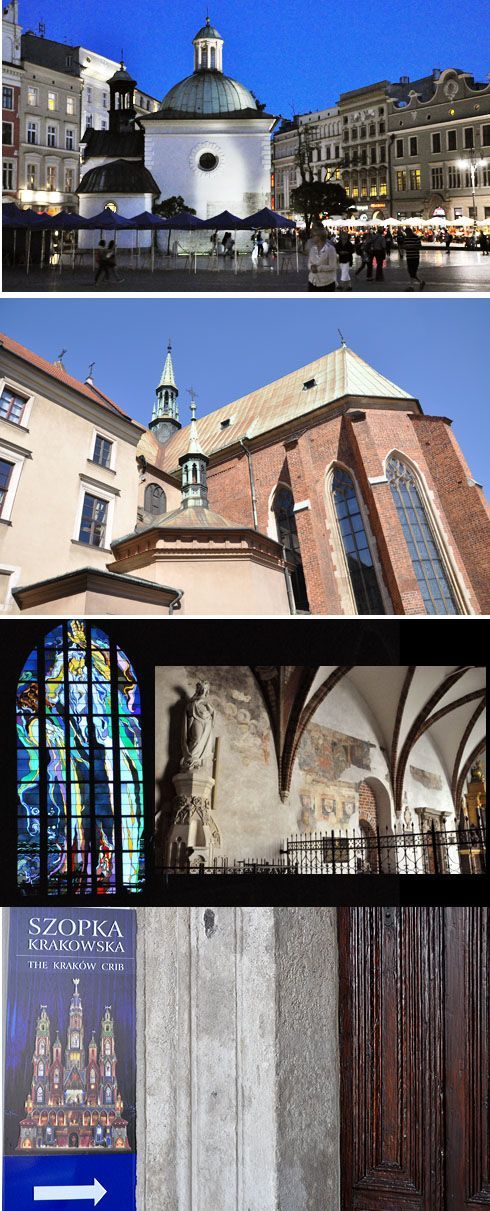
Churches: top only St. Adalbert’s, other images all St. Francis of Assisi, a church built around 1237 then rebuilt after a Mongol invasion in 1241; it was then significantly damaged by fire in 1850. In 1897 Stanislaw Wyspianski, the father of “Young Poland” art, a playwright, poet, designer and artist himself at the age of 28 won the contract to create the murals and stained glass on the new church. He died aged 37. We will come back to young Wyspianski in a moment to compare his stained glass in an enlarged image with that of Chagall aged 91 in Mainz, Germany.
As we left the market square Ms. Mazanek drew our attention to Krakow’s oldest church, St. Adalbert’s and reminded us it is floodlit in the evening. We resolve to come back for a night shot. The free guide book (in every hotel) for most Polish cities, In Your Pocket, says this about the church: “It sits not unlike a lost orphan at the southeast corner of the Cloth Hall — a mad mix of pre-Roman, Roman, Gothic, Renaissance, and Baroque architecture. The earliest parts of the building date to the 11th century, thus pre-dating the Rynek and explaining its seemingly random position within it. St. Adalbert had his own cult following at the time, which explains how it managed to survive.”
This is striking because Krakow has so many interesting buildings to look at that you do not notice them all; they really are hidden in full sight. Monika our guide, however, has something she knows we would like to see. Yes, another church, but this is different she says. It has the nativity scene that started with St. Francis of Assisi in the 13th century and has become peculiarly Krakovian, a local Christmas tradition about two centuries old. It began when local craftsmen started making those a seasonal decoration that could be carried past homes where owners might pay a nominal fee to watch the procession. After Poland got its independence in 1918 those szopkas, nativity scenes, became more complicated and Krakow in 1937 announced an annual December competition where all contestants show their nativity scenes in the Main Market Square beside the Adam Mickiewicz Monument. The best ones are then displayed in museums and special places like this one we are looking at now in the Basilica of St. Francis of Assisi.
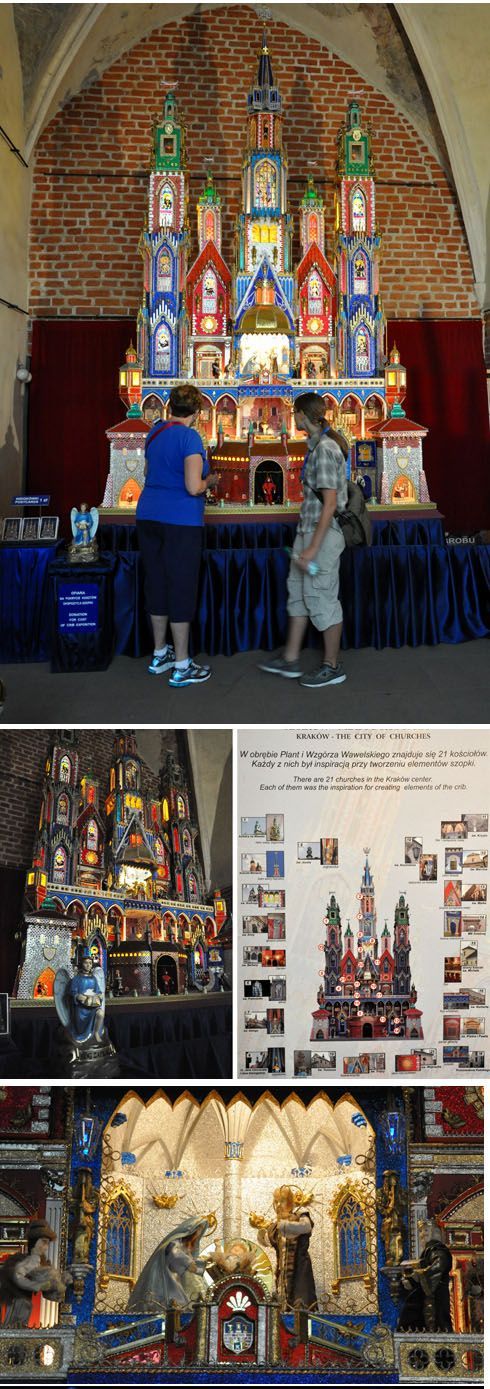
Christmas comes early to visitors coming to a corner of the St. Francis of Assisi church. The nativity scenes are huge, detailed, and colorful. The contents resemble old-fashioned doll’s houses of the Victorian era. Even though it was September a small crowd of interested local families were drifting past us all showing excited interest.
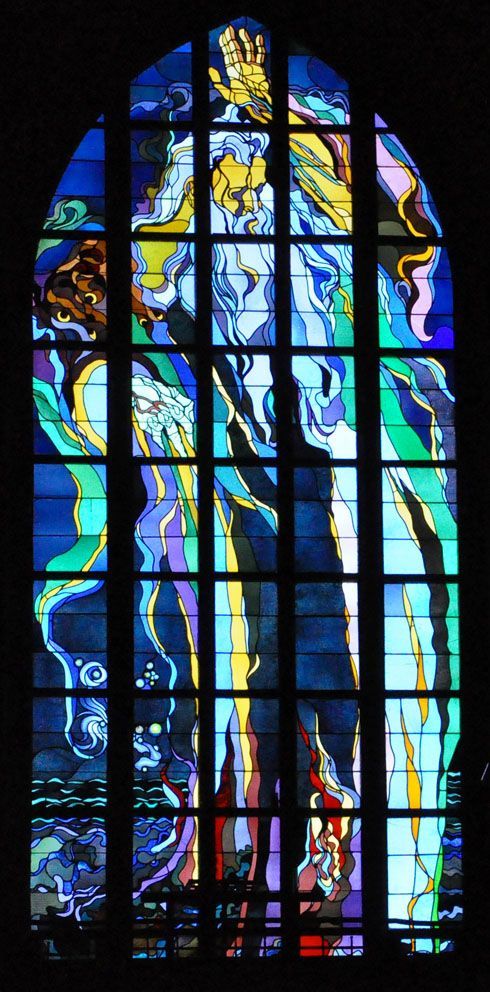
We wanted our readers to see the details in our enlarged photograph of this exquisite stained glass window that Wyspianski enthusiasts have called “God the Father. Let It Be.” The blues are almost as deep as those Marc Chagall used in St. Stephen’s in Mainz, and we know from our visit there that Chagall invented 8 of the 18 blue shades himself.
We are walking now from the south central part of Old Town north towards the Great Barbican, the fortress that guarded the most northern entrance to Old Town from outside the city, the Florianaska Gate. Medieval Krakow was surrounded by a moat 60 feet wide and by two miles of walls eight feet thick and 300 feet high. The walls had eight gates and 39 towers.
Our guide points out the statue of Krakow’s most famous student, Copernicus, and we tell her Insight Vacations will be taking us to his home in Torun which is now a museum in one of the oldest cities in Poland. We come to the magnificent monument that celebrates The Battle of Grunwald, a great victory for Poland and its ally Lithuania against the Prussians in 1410. We will tell you more about this statue in our next and last article on Krakow. A hundred yards from the monument stands a new tribute to Jan Matejko, the famous artist who gave courage to Poland as it was divided up by its enemies in the long lasting partitions which threatened to lose Poland its identity.
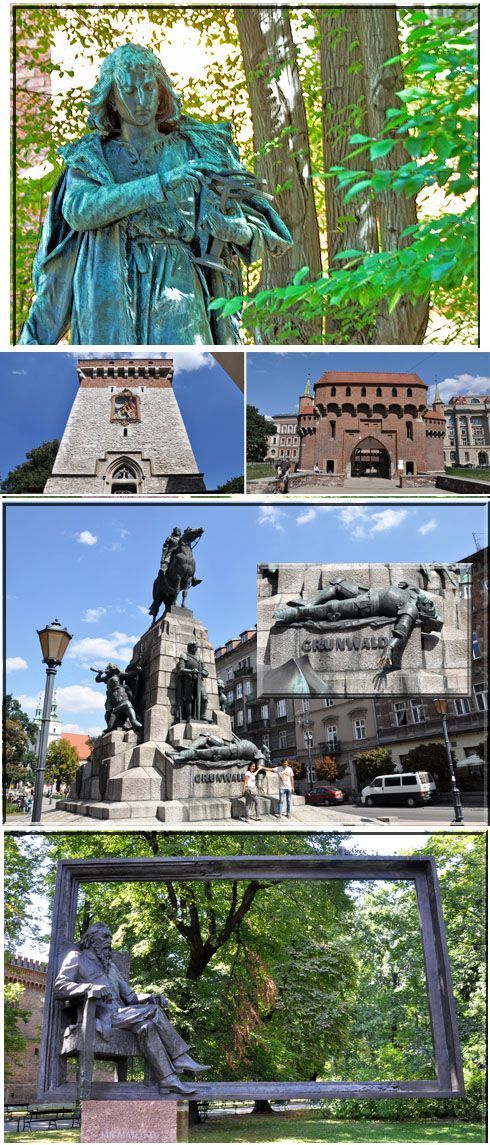
Copernicus statue. Barbican defences. Battle of 1410 Grunwald monument. Tribute to artist Jan Matejko.
Jan Matejko lived from 1838 to 1893 and although an indifferent student he showed great talent as an artist and rapidly became one of the foremost experts in historical art. His father was a Czech music teacher living in Poland when it was under the partition of Austria. Jan Matejko is beloved by the Poles because he gave them pride and courage at a time when the country was close to losing its existence. His paintings covered vast canvases and contained great detail. Say his reviewers: “His paintings are not historical illustrations, rather they are powerful expressions of his psyche and attitude to the world. And his art shows his love for his country.”
And as we move around Poland, we find it easy to share his love for his country. And about three minutes from his monument stands his home, now a museum.
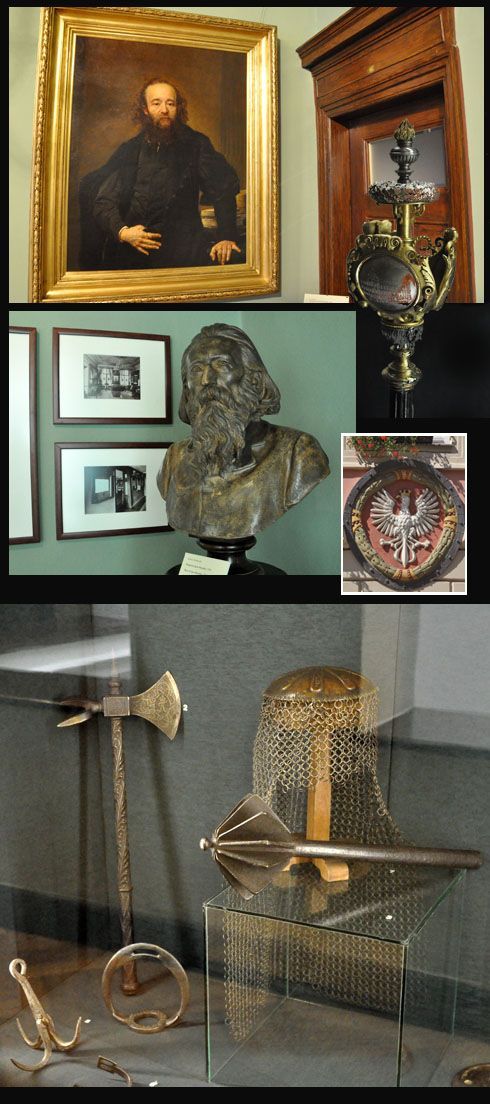
A visit to his former home adds to one’s knowledge about the person who lived there but for the casual visitor there is little to indulge one’s curiosity except to find he collected armor and medieval weapons perhaps as stage props for his battle scenes. A visit to his former home, however, is a way visitors can show their respect for this famous figure and patriot.
Photography by the authors
The Andersons, who live in San Diego, are the resident travel & cruise columnists for Physician's Money Digest. Nancy is a former nursing educator, Eric a retired MD. The one-time president of the New Hampshire Academy of Family Physicians, Eric is the only physician in the Society of American Travel Writers. He has also written five books, the last called The Man Who Cried Orange: Stories from a Doctor's Life.




